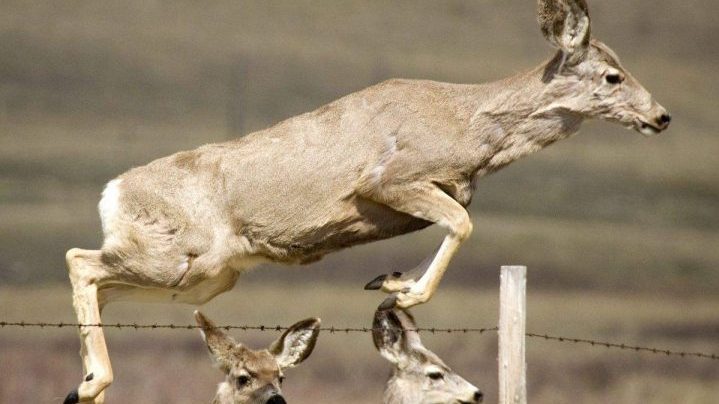With harvest season upon the Prairies, wild animals and their summer homes are changing.

According to the executive director of Saskatoon Wildlife, Michael Kincaid, animals on the move mean drivers need to be more alert on prairie roadways.
“Their bedding areas and feeding areas that they normally had all summer, they’re getting bumped out of that,” he said. “The wildlife is on the move and you’re going to see them crossing roads and just moving to different areas for the fall.”
Younger animals are among the most vulnerable, Kincaid said.
“The young are growing up too and they’re not as experienced,” Kincaid noted. “They’re just running and following, so you gotta be a bit more cautious.”
While the animal often pays the ultimate price in an encounter with a vehicle, wildlife collisions can be costly for drivers also.
According to SGI, there were 15,664 wildlife collision claims reported to the insurance provider in 2017 and the total cost in claims was more than $80 million. The numbers include crashes involving deer, moose, birds, other wildlife and domestic animals.
“Larger ones like deer and moose — you don’t want to hit them with a vehicle, it can cause injury to yourself.”
“So you need to be a little extra diligent,” Kincaid said. “And those are the animals you’re seeing more on the move at this time of year.”
Collision unavoidable?
SGI says if you can’t swerve out of the way of an animal and you must hit it, there are ways to limit damage and injury:
- Aim your vehicle at the spot where the animal came from, not where it’s going.
- Try for a glancing blow rather than a head-on encounter and let up on your brake just before you collide. This causes the front of your vehicle to rise slightly and reduces the chances of the animal going through your windshield.
- Hitting an animal can be an extremely traumatic experience. If possible, move to the shoulder and turn on your hazard lights. Take a moment to regain your composure and then assess the damage to your vehicle.
- Do not approach the animal, especially if it appears to be wounded. Injured animals can be extremely dangerous.
- Call the police or your local RCMP detachment if there are human injuries or significant damage to your vehicle. If the damage is less severe, you may continue driving and follow regular SGI claims reporting procedures.
In addition to animals, harvest season brings an increase in the number of farming vehicles travelling on highways.
Motorists are reminded that they must slow to 60 km/h when passing emergency and service vehicles parked at the side of the road with their lights flashing.
WATCH:: $706M budgeted for Saskatchewan’s highways and roads in 2019-20



Comments